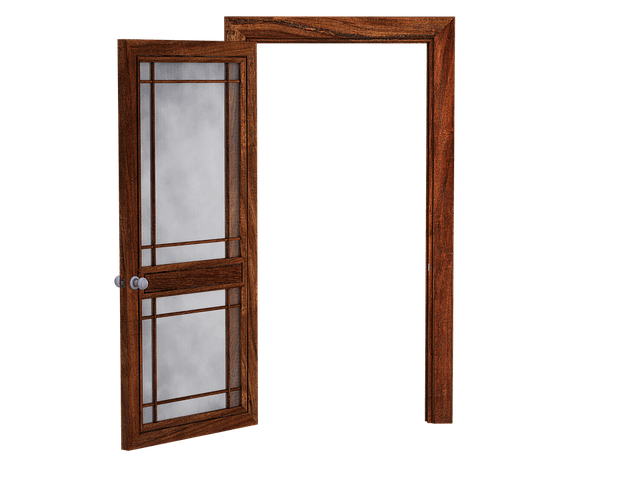Doors are an essential part of any wall assembly, exterior or interior. Doors are also typically the acoustically weakest part of a wall partition and the question of how to soundproof a door is often asked.
More...
The ability of building assemblies to block sound is quantified by an STC (Sound Transmission Class) rating. The table below provides STC values of standard interior walls for comparison with doors described later.
Sound attenuation rating for typical interior wall [Reference 1]
Wall Type | Wall Cavity | STC Rating |
|---|---|---|
Wood studs 2" x 4", 16" on centre, 1/2" drywall on both sides | Hollow | 34 |
Wood studs 2" x 4", 16" on centre, 1/2" drywall on both sides | Fiberglass or rock wool insulation | 36 |
Higher STC rating means better sound insulation.
Soundproof a door! Is it possible?
The tables below provide STC values for typical interior and exterior and special acoustical doors.
Interior doors
(tested as inoperable with the perimeter sealed) [2]
Door Type | Core Type | STC Rating |
|---|---|---|
Flush Series | Mineral | 35 |
Molded Panel (Raised) | Particleboard | 33 |
Molded Panel (Raised) | Engineered | 31 |
Flush Series | Particleboard | 31 |
Molded Panel | Hollow | 27 |
Flush Series | Hollow | 24 |
Exterior doors without glass
(tested as operable exterior door units) [3]
Door Type | Core Type | STC Rating |
|---|---|---|
Fiberglass | Foam | 22 |
Utility Steel | Foam | 23 |
HD Wood Edge Steel | Foam | 24 |
Fiberglass | Particleboard | 30 |
Acoustical doors [4]
Acoustical door type | STC Rating |
|---|---|
Model 499723 Wood Door | 49 |
Model 479725 Wood Door | 47 |
Model 4696241 Wood Door | 46 |
Acoustical doors, specially designed for maximum sound attenuation, are sometimes called soundproof doors. They are significantly more expensive than standard doors. A special acoustical door is the most effective method to soundproof a door.
From the listed STC values provided by the door manufacturers, you can see that hollow interior doors are poor, and solid doors are better sound insulators, but neither is as good as a wall. It is, therefore, advisable to install special acoustical doors in applications where extra sound attenuation is required, for example, in your home theatre or music practice room.
Referring to the manufacturer's information [3], you can see a wide range of acoustic performance for exterior doors. The STC values range from STC 22 for foam core steel doors to STC 38 for particle board core fiberglass doors. Somewhat counterintuitively, exterior doors with glass perform better than doors without glass. However, pay attention to the type of glass insert. A fiberglass door with particle board core and a 1-inch thick laminated glass insert achieves STC 38. When specifying exterior doors, it is important to refer to the manufacturer's information for acoustic performance. Do not buy doors from manufacturers who cannot provide independent acoustic test data for their doors.
It is important to know that the STC rating for interior doors is measured in a laboratory for the door slab only, without hinges and a gap around the door’s perimeter. This setup is unattainable in a typical door installation; therefore, the actual performance of an installed door will be consistently lower than the ratings given in the table. Some exterior doors are tested completely, with frames and seals. This test data is more representative of the actual performance of the doors in the field.
To maximize an installed door’s sound attenuation, the gap around the door's perimeter must be sealed as well as possible with weather stripping or a special acoustical seal. The gap at the bottom of the door also must be sealed with a threshold, door sweep, or a mechanically activated drop-down seal. Exterior doors usually are already equipped with weather stripping.
The quality of door installation is also important. Often doors (mainly interior doors) are installed with a large gap between door jambs and adjacent wall studs. The trim frame just conceals this gap and must be filled with insulation and sealed with acoustic caulking to block sound leakage.
How to soundproof a door
People often ask me how to soundproof a door, particularly an existing door.
The first step is to verify if the door is hollow or solid. One can usually tell by knocking on the door panel and checking the door’s weight. If the door is hollow, replace it with a solid door.
Once done, could you install quality weather stripping and threshold or a specialized acoustic seal around the door's perimeter? These improvements may be sufficient in many situations.
If you need a more comprehensive solution, please contact me. I plan to write an article in this blog about ways to soundproof a door, but a cheap method, as described in another article, does not work.
References
[1] Master Handbook of Acoustics, Everest and Pohlmann, Sixth Edition, McGraw Hill 2015; p. 328
If you wish to get a no-obligation consulting quote in the Toronto area form me, please click on the button below.
I always appreciate your feedback. Please use the form below to submit your comments.
